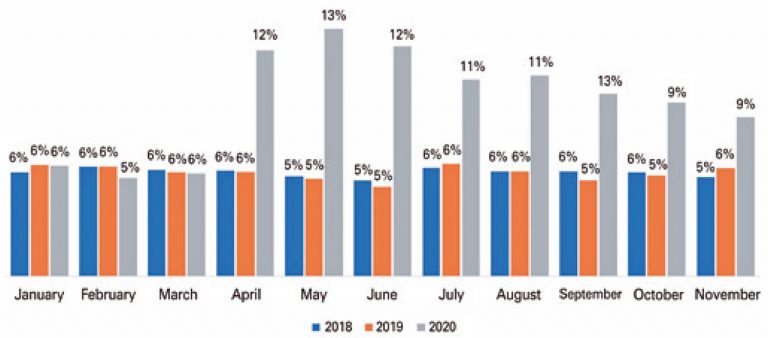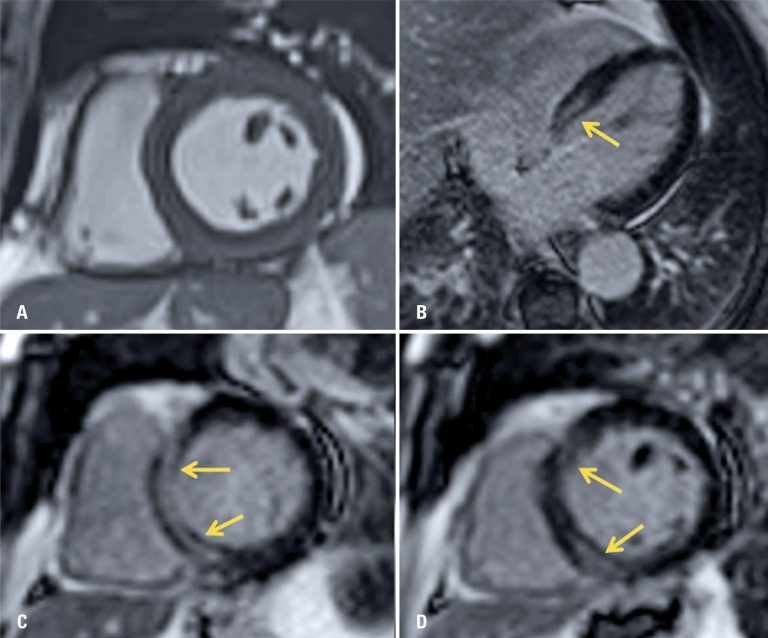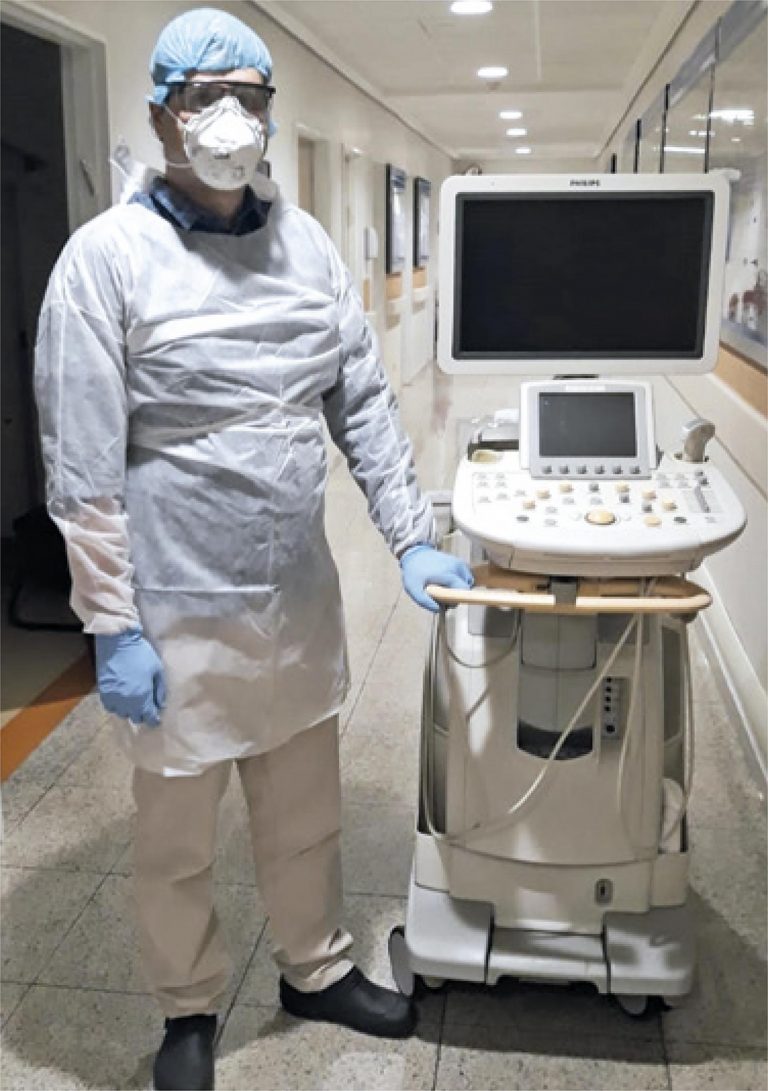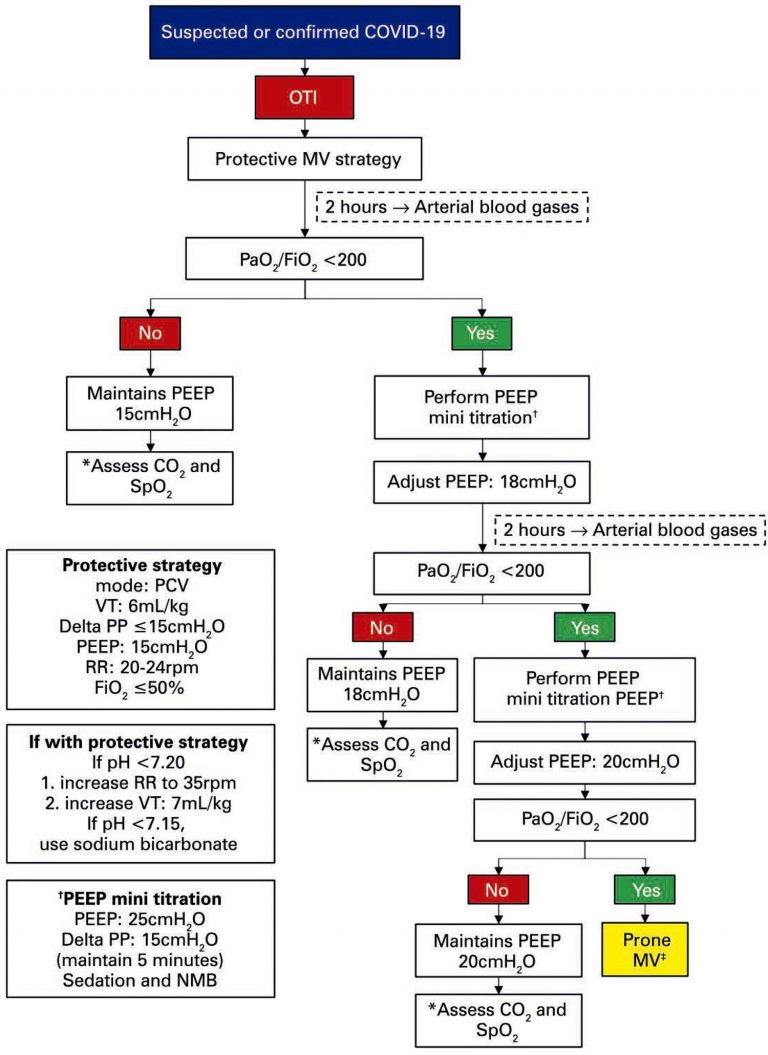26/Oct/2021
High mortality among patients with cancer and COVID-19 infection: the experience of a Brazilian cancer center
einstein (São Paulo). 26/Oct/2021;19:eAO6254.
View Article26/Oct/2021
High mortality among patients with cancer and COVID-19 infection: the experience of a Brazilian cancer center
DOI: 10.31744/einstein_journal/2021AO6254
ABSTRACT Objective To evaluate the severity of COVID-19 in cancer patients to describe clinical and epidemiological factors associated with poor outcomes (mortality and need of intensive care unit admission or mechanical ventilation). Methods Retrospective data from patients with cancer and laboratory diagnosis of COVID-19, obtained between March 16 and May 29, 2020, were retrieved out of a cancer center database. Data analyzed included patient history, age, sex, comorbidities, types of cancer and anticancer therapy. Results This sample comprised 105 patients […]
Keywords: Coronavirus infections; COVID-19; Fatal outcome; Mortality; Neoplasms; Pandemics; SARS-CoV-2
09/Aug/2021
Impact of the COVID-19 pandemic on emergency department visits: reference center
DOI: 10.31744/einstein_journal/2021AO6467
ABSTRACT Objective To analyze the impact of COVID-19 on emergency department metrics at a large tertiary reference hospital in Brazil. Methods A retrospective analysis of consecutive emergency department visits, from January 1, 2020, to November 21, 2020, was performed and compared to the corresponding time frame in 2018 and 2019. The volume of visits and patients’ demographic and clinic characteristics were compared. All medical conditions were included, except confirmed cases of COVID-19. Results A total of 138,138 emergency department visits […]
Keywords: Coronavirus infections; COVID-19; Emergency medical services; Health economics; SARS-CoV-2
09/Apr/2021
Convalescent plasma therapy in COVID-19 critically ill patients during advanced phases of clinical trials and their preliminary results
einstein (São Paulo). 09/Apr/2021;19:eRW6186.
View Article09/Apr/2021
Convalescent plasma therapy in COVID-19 critically ill patients during advanced phases of clinical trials and their preliminary results
DOI: 10.31744/einstein_journal/2021RW6186
ABSTRACT The objective of this study was to highlight the global scientific effort to fight the SARS-CoV-2, addressing the preliminary results of passive immunization through convalescent plasma. We performed a search at the major databases of interventional clinical trial protocols about the transfusion of convalescent plasma in patients with COVID-19, as well as, published articles (n≥25), using the following search strategy: [(COVID-19 OR SARS-CoV-2 OR nCoV-2019) AND (Convalescent plasma OR Plasma exchange) AND (Treatment OR Therapy)]. A total of 24 […]
Keywords: Betacoronavirus; Convalescent plasma; Coronavirus infections; COVID-19; Immunization; Immunization, passive; Plasma; SARS-CoV-2
09/Mar/2021
COVID-19 meta-analyses: a scoping review and quality assessment
DOI: 10.31744/einstein_journal/2021AO6002
ABSTRACT Objective: To carry out a scoping review of the meta-analyses published regarding about coronavirus disease 2019 (COVID-19), evaluating their main characteristics, publication trends and methodological quality. Methods: A bibliometric search was performed in PubMed®, Scopus and Web of Science, focusing on meta-analyses about COVID-2019 disease. Bibliometric and descriptive data for the included articles were extracted and the methodological quality of the included meta-analyses was evaluated using A Measurement Tool to Assess Systematic Reviews. Results: A total of 348 meta-analyses […]
Keywords: Betacoronavirus; Bibliometrics; Coronavirus; COVID-19; Meta-analysis; SARS-CoV-2; Scientometrics; Systematic review
05/Mar/2021
Differential diagnoses of acute ground-glass opacity in chest computed tomography: pictorial essay
DOI: 10.31744/einstein_journal/2021RW5772
ABSTRACT Ground-glass opacity is a very frequent and unspecified finding in chest computed tomography. Therefore, it admits a wide range of differential diagnoses in the acute context, from viral pneumonias such as influenza virus, coronavirus disease 2019 and cytomegalovirus and even non-infectious lesions, such as vaping, pulmonary infarction, alveolar hemorrhage and pulmonary edema. For this diagnostic differentiation, ground glass must be correlated with other findings in imaging tests, with laboratory tests and with the patients’ clinical condition. In the context […]
Keywords: Coronavirus infections; COVID-19; Diagnosis, differential; Pandemics; SARS-CoV-2; Thorax/diagnostic imaging; Tomography, x-ray computed
26/Feb/2021
Impact of the COVID-19 pandemic stay at home order and social isolation on physical activity levels and sedentary behavior in Brazilian adults
einstein (São Paulo). 26/Feb/2021;19:eAE6156.
View Article26/Feb/2021
Impact of the COVID-19 pandemic stay at home order and social isolation on physical activity levels and sedentary behavior in Brazilian adults
DOI: 10.31744/einstein_journal/2021AE6156
ABSTRACT Objective To investigate the impact of the coronavirus 2019 pandemic on physical activity levels and sedentary behavior among Brazilians residents aged ≥18 years. Methods An online survey was distributed through a social media platform between May 5 and 17, 2020. Participants completed a structured questionnaire in Google Forms, which assessed the physical activity level and sedentary behavior of adults in Brazil during the pandemic. Results Age (OR: 0.98; 95%CI: 0.97-0.99), chronic disease (OR: 1.29; 95%CI: 1.03-1.63), physical inactivity before […]
Keywords: Coronavirus; Coronavirus infections; COVID-19; Physical inactivity; Quarantine; Sedentary behavior; Sedentary lifestyle
20/Oct/2020
COVID-19 myocarditis: a case report
DOI: 10.31744/einstein_journal/2020RC5876
ABSTRACT A male patient with flu-like symptoms and tomography and laboratory diagnosis of severe acute respiratory syndrome. He developed acute cardiac dysfunction during admission and was submitted to a cardiac magnetic resonance imaging examination, which confirmed acute myocarditis, indicating cardiac involvement by coronavirus disease 2019. A review and discussion about coronavirus disease 2019-related cardiac manifestations are reported, focusing on the imaging findings to make diagnosis.
Keywords: Cardiomyopathies; Communicable diseases; Coronavirus; Coronavirus infections; COVID-19; Echocardiography; Myocarditis; Pneumonia; Severe acute respiratory syndrome; Tomography, x-ray computed
09/Oct/2020
Quality and safety innovations in the Radiology Department during the COVID-19 pandemic: a Latin American experience
einstein (São Paulo). 09/Oct/2020;18:eGS5832.
View Article09/Oct/2020
Quality and safety innovations in the Radiology Department during the COVID-19 pandemic: a Latin American experience
DOI: 10.31744/einstein_journal/2020GS5832
ABSTRACT Radiology departments were forced to make significant changes in their routine during the coronavirus disease 2019 pandemic, to prevent further transmission of the coronavirus and optimize medical care as well. In this article, we describe our Radiology Department’s policies in a private hospital for coronavirus disease 2019 preparedness focusing on quality and safety for the patient submitted to imaging tests, the healthcare team involved in the exams, the requesting physician, and for other patients and hospital environment.
Keywords: Coronavirus; Coronavirus infections; COVID-19; Quality and safety; Tomography, x-ray computed
07/Jul/2020
Gastrointestinal manifestations and nutritional therapy during COVID-19 pandemic: a practical guide for pediatricians
DOI: 10.31744/einstein_journal/2020RW5774
ABSTRACT Coronavirus disease 2019 (COVID-19) is a disease caused by the severe acute respiratory syndrome coronavirus 2 (SARS-CoV-2), which has spread globally in pandemic proportions. Accumulative evidence suggests SARS-CoV-2 can be transmitted through the digestive system, the so-called fecal-oral route of transmission, and may induce several gastrointestinal manifestations. MEDLINE® and Embase databases were extensively searched for major clinical manifestations of gastrointestinal involvement in children and adolescents with COVID-19 reported in medical literature, and for nutritional therapy-related data. Findings and recommendations […]
Keywords: Adolescent; Betacoronavirus; Child; Coronavirus infections/complications; COVID-19; Gastrointestinal diseases/etiology; Inflammatory bowel diseases; Nutritional therapy; SARS-CoV-2
29/May/2020
Intensive support recommendations for critically-ill patients with suspected or confirmed COVID-19 infection
einstein (São Paulo). 29/May/2020;18:eAE5793.
View Article29/May/2020
Intensive support recommendations for critically-ill patients with suspected or confirmed COVID-19 infection
DOI: 10.31744/einstein_journal/2020AE5793
ABSTRACT In December 2019, a series of patients with severe pneumonia were identified in Wuhan, Hubei province, China, who progressed to severe acute respiratory syndrome and acute respiratory distress syndrome. Subsequently, COVID-19 was attributed to a new betacoronavirus, the severe acute respiratory syndrome coronavirus 2 (SARS-CoV-2). Approximately 20% of patients diagnosed as COVID-19 develop severe forms of the disease, including acute hypoxemic respiratory failure, severe acute respiratory syndrome, acute respiratory distress syndrome and acute renal failure and require intensive care. […]
Keywords: Coronavirus; COVID-19; Intensive care units; Respiratory distress syndrome, adult; Respiratory insufficiency








